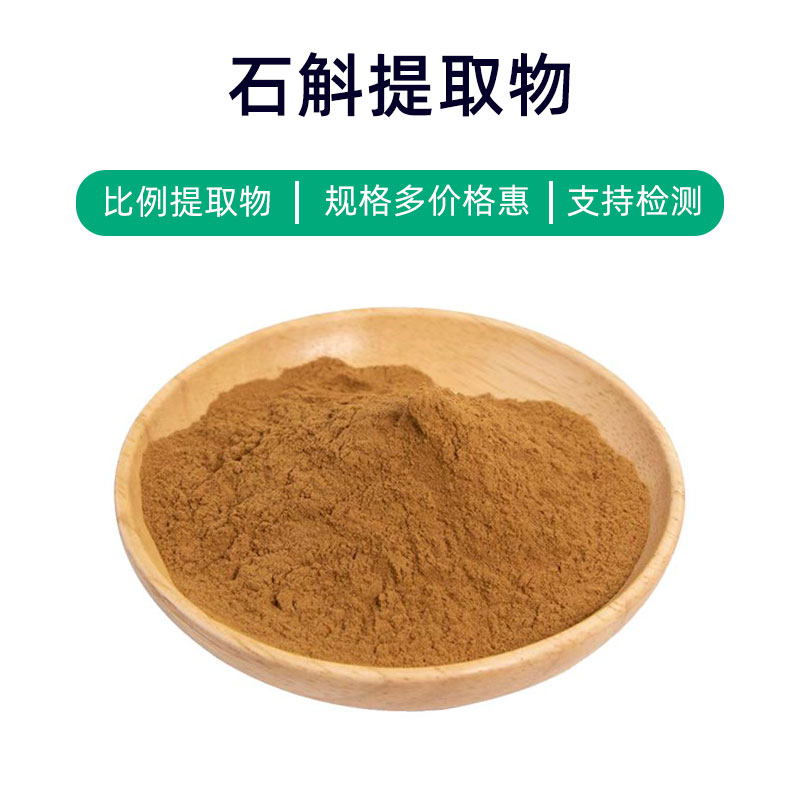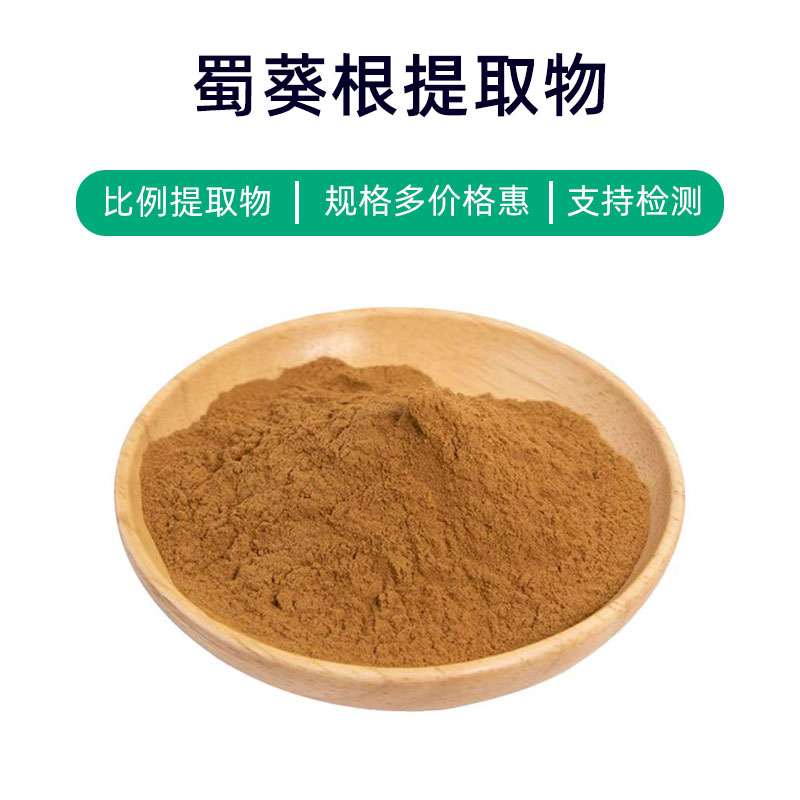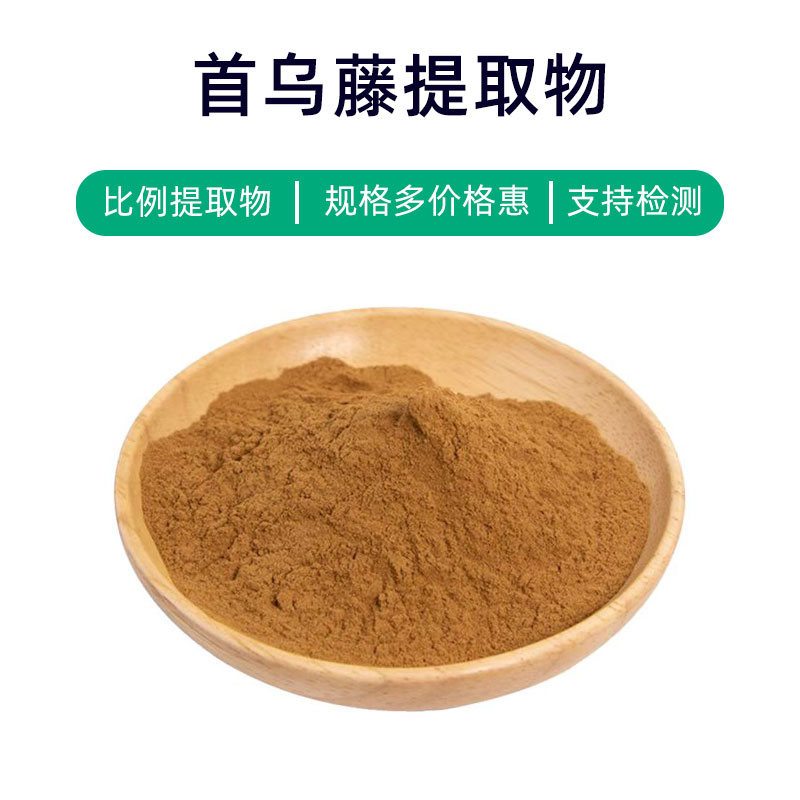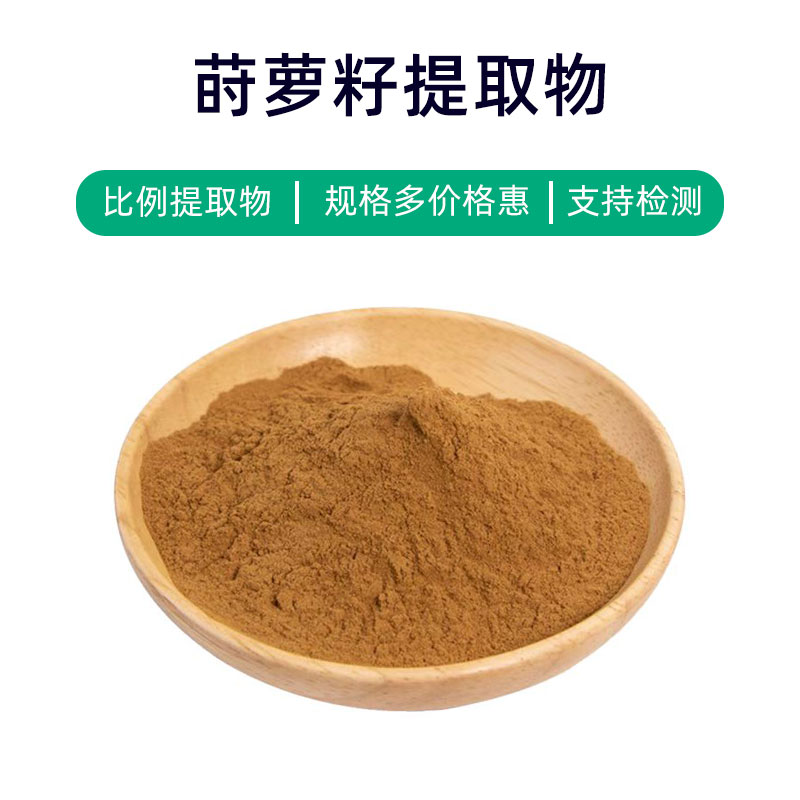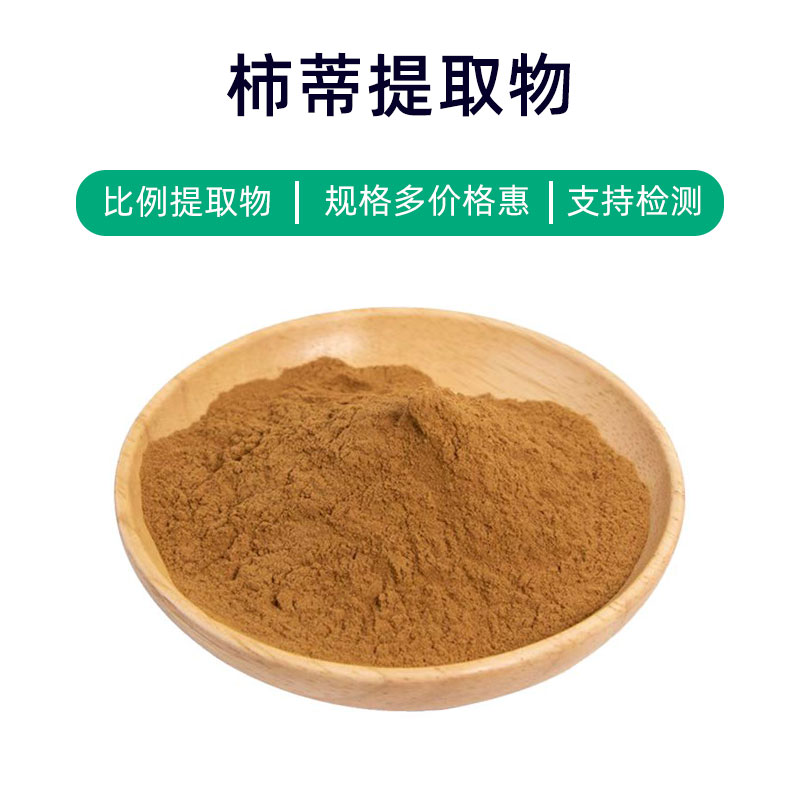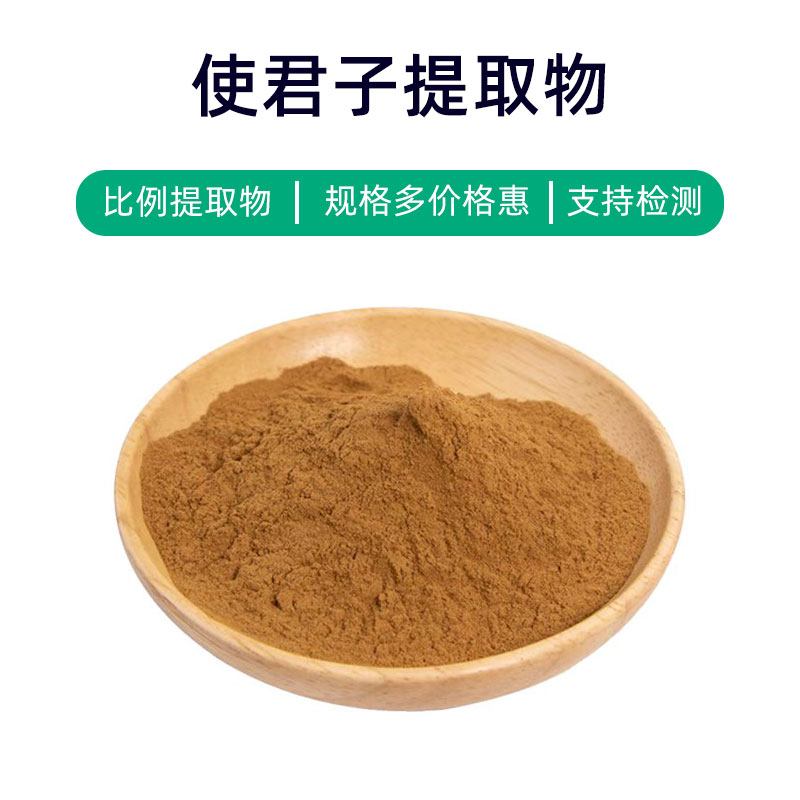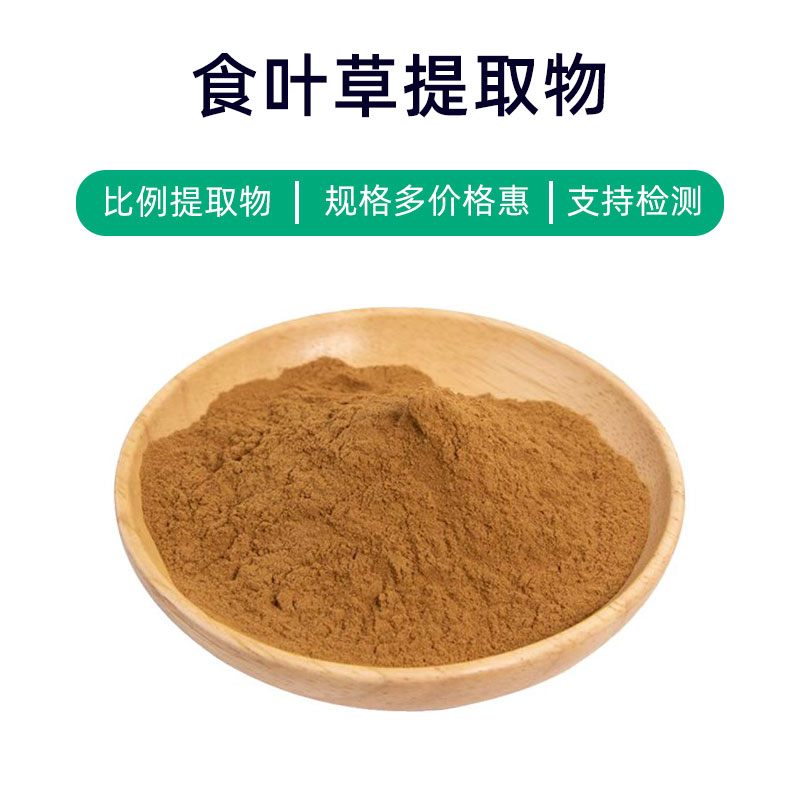Dendrobium Extract Product Introduction
Dendrobium extract is a natural plant ingredient extracted from Dendrobium plants, primarily consisting of active substances like polysaccharides, alkaloids, and polyphenols. It has widespread applications in pharmaceuticals, dietary supplements, and cosmetics.
In the medical field, Dendrobium extract is utilized as a traditional Chinese medicinal herb, believed to have effects such as nourishing Yin, moisturizing dryness, clearing heat and detoxifying, and boosting overall wellness. It is commonly used to regulate the immune system, improve digestive function, increase energy, and combat fatigue.
In the supplement industry, Dendrobium extract is widely used in the formulation of health products. Its rich content of polysaccharides and other active compounds are thought to possess antioxidant, anti-aging, and immune-boosting effects, frequently added to supplements to enhance overall health and resistance.
In cosmetics, Dendrobium extract is often included in skincare products. The polyphenol components provide strong antioxidant properties, protecting the skin from free radical damage, slowing aging, and improving skin elasticity and radiance. As a result, Dendrobium extract is commonly utilized in skincare products such as creams, serums, and masks to enhance skin texture and maintain a youthful, healthy appearance.
Dendrobium Extract Production Process
The production process of Dendrobium extract typically involves the following major steps:
- Raw Material Preparation: Fresh Dendrobium plants are selected as raw materials and undergo cleaning, chopping, and other pretreatment processes to ensure quality and purity.
- Extraction Process: Common extraction methods include water extraction and alcohol extraction, with water extraction being one of the most prevalent techniques. The pretreated Dendrobium material is soaked with an appropriate amount of water in the extraction equipment, followed by heating, stirring, etc., to dissolve active components in the water.
- Filtration and Separation: After extraction, the solution is filtered to remove solid impurities and residues, yielding the Dendrobium extract.
- Concentration Treatment: The extract is then concentrated to remove excess water, concentrating the active components in the Dendrobium extract.
- Drying: The concentrated extract undergoes drying, typically using spray drying or vacuum drying methods, converting it into powder or solid form.
- Milling: The dried Dendrobium extract is milled to achieve uniform particle size for easier packaging and application.
- Quality Inspection: Quality checks are performed on the final product, including the active ingredient content and tests for microorganisms and heavy metals, ensuring compliance with relevant standards and requirements.
- Packaging and Storage: The quality-approved Dendrobium extract is packaged, usually in sealed containers, to avoid sunlight and humidity, guaranteeing product quality and stability.
These represent the common production process for Dendrobium extract, with specific parameters and steps adjusted and optimized based on the manufacturer's actual conditions and requirements.
Dendrobium Extract Effects and Side Effects
Dendrobium extract is a commonly used herbal material with various benefits and effects, mainly including:
- Nourishing Yin and Generating Fluids: Dendrobium extract is rich in active ingredients that nourish Yin and moisturize dryness, helping to support lung and kidney health and alleviate discomforts like dry mouth.
- Clearing Heat and Detoxifying: The natural compounds in Dendrobium extract have detoxifying properties and can be used to treat heat-related ailments, such as oral ulcers and boils.
- Boosting Immunity: Studies indicate that some components in Dendrobium extract can enhance immune function, boosting the body's resistance and preventing infectious diseases.
- Antioxidant Properties: Dendrobium extract is rich in polyphenolic compounds with significant antioxidant effects that can neutralize free radicals, slow cell aging, and protect cardiovascular and nervous system health.
- Regulating Blood Sugar: Research has found that certain components in Dendrobium extract can help lower blood sugar levels, which is useful in managing diabetes and other metabolic diseases.
- Liver Protection: Some active ingredients in Dendrobium extract are known to protect liver cells and promote their regeneration, aiding in the treatment of hepatitis and fatty liver disease.
- Blood Pressure Regulation: Some studies have shown that components in Dendrobium extract can lower blood pressure, effectively regulating hypertension.
Although Dendrobium extract offers numerous benefits, caution should be exercised during use, as individual differences and improper use may lead to adverse reactions, such as allergies or digestive issues. It is recommended to follow medical advice regarding dosage to avoid side effects. Pregnant women, nursing mothers, children, and the elderly should consult a doctor before use.
Dendrobium Extract Application Scenarios and Dosage
Dendrobium extract has a wide range of applications in medicine, food, and cosmetics, with the following main usage scenarios and recommended dosages:
- In Medicine:
- Oral Medications: Dendrobium extract is commonly used in traditional Chinese medicine formulations, which can be made into oral liquids, capsules, or tablets. The general recommended dosage for adults is 3-5 grams per dose, taken 2-3 times daily, with specific dosages to be followed as per medical advice.
- Topical Ointments: Dendrobium extract can also be used in topical formulations for treating burns and skin injuries; the amount used should be based on the specific condition, generally applied 2-3 times daily.
- In Food:
- Dietary Supplements: Dendrobium extract may be formulated into dietary supplements for nourishment and wellness, with an average suggested dosage of 2-3 grams, taken 1-2 times daily, adjustable based on personal needs.
- Functional Food Additives: It can also serve as an additive in functional foods to enhance nutritional value and functionality. The addition should comply with food safety standards, with specifics depending on product formulation.
- In Cosmetics:
- Skincare Products: Dendrobium extract is commonly included in skincare products for its moisturizing and antioxidant effects, helping to address issues like dryness and fine lines. The recommended application amount is appropriate, distributed evenly over the face or body as needed.
- Hair Care Products: It may be added to shampoos and conditioners, assisting in nourishing hair and combating dryness and breakage; the dosage is typically defined by product formulation.
Overall, the application methods and dosages of Dendrobium extract vary across different fields and should be used according to specific product instructions or medical guidance to avoid adverse reactions from overuse or improper application. If any discomfort occurs during use, discontinue immediately and consult a doctor.
Overview of Dendrobium Plants: Sources, Distribution, and Growing Conditions
Dendrobium, belonging to the Orchidaceae family, is a type of orchid widely used in traditional medicine and health product formulations. Below is an overview of the source plants for Dendrobium extract, their distribution, and growing conditions:
- Plant Overview:
Dendrobium comprises perennial herbaceous plants with creepers or upright stems, featuring clustered leaves and solitary flowers blooming at the nodes. Flower colors vary, including white, pink, and yellow. Dendrobium plants have a well-developed root system with strong adaptability. - Distribution:
Dendrobium plants are primarily distributed throughout Southeast Asia, including southern China, Vietnam, Thailand, Malaysia, and Indonesia. Southern China is one of the main production areas for Dendrobium, particularly common in Guangdong, Guangxi, and Yunnan provinces. - Growing Conditions:
Dendrobium plants thrive in tropical and subtropical regions, preferring warm, humid, and well-ventilated environments. They are often found in mountainous areas, on rocky slopes, and growing on trees or cliffs, typically in semi-shaded conditions. In their natural habitat, Dendrobium plants attach to tree trunks or rocks, thriving on moisture and nutrients from the air. - Growth Habits:
Dendrobium plants generally have a long growth cycle, requiring time to mature. They grow slowly but are adaptable to various climates and soil conditions. Dendrobium primarily reproduces through clonal propagation or pollination, with changes in the growth environment potentially affecting reproduction and growth. - Cultivation and Collection:
Dendrobium plants are not only found in the wild but are also cultivated artificially, typically in greenhouse or semi-greenhouse conditions. When harvesting Dendrobium, mature stems are chosen, and care is taken to avoid overharvesting, ensuring the protection of wild plant resources.
In summary, Dendrobium is a type of orchid that grows in tropical and subtropical regions, exhibiting strong adaptability. In the wild, it has low environmental requirements but prefers humid, well-ventilated environments, commonly found in mountainous areas, on tree trunks, or on rocky surfaces.
Processing and Storage of Dendrobium Extract
The processing of Dendrobium extract generally involves several steps: first, mature Dendrobium stems are harvested; then cleaned and sorted; followed by soaking, crushing, extraction, and subsequent filtering, concentration, and drying processes to yield Dendrobium extract. To ensure quality, the extract should be stored in a cool, dry, well-ventilated environment, protected from direct sunlight and high humidity, while preventing moisture and contamination to extend shelf life and maintain the stability of its active ingredients.
Monica Sun is a seasoned expert in the plant extraction industry with over a decade of experience in research and production. She specializes in the extraction and purification of plant active ingredients, focusing on driving innovation in natural product applications. Monica has participated in the development of multiple functional plant extracts, delivering high-value natural raw material solutions for the health food, pharmaceutical, and dietary supplement sectors.

